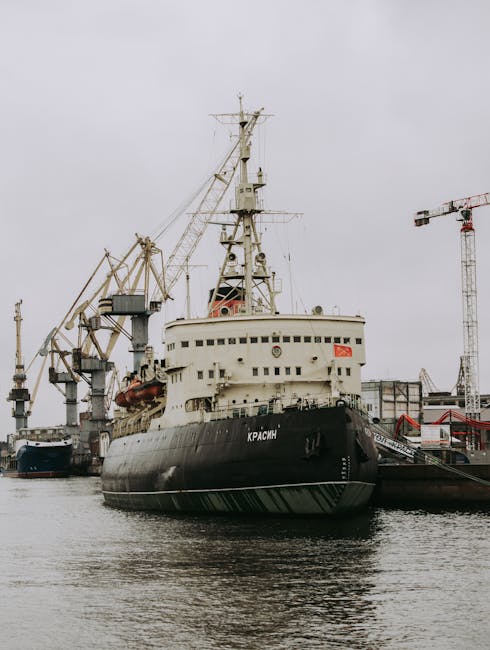- Disproportionate Impact: Climate change intensifies existing gender inequalities, disproportionately affecting women, especially in rural and climate-vulnerable communities in India.
- Beijing Report Gap: The Beijing India Report 2024 lacks a robust climate-gender lens, missing a critical intersection.
- Increased Burden: Climate-induced water scarcity, extreme heat, and erratic rainfall increase women’s workload (water collection, caregiving), reduce agricultural productivity, and limit income-generating opportunities. Women spend 150 million workdays collecting water each year. Women’s unpaid workload could reach 8.3 hours/day by 2050.
- Health Risks: Climate change exacerbates malnutrition, anemia (52.2% of pregnant women affected), maternal and neonatal health issues, and increases the risk of domestic violence (potential 23.5% rise by 2090).
- Economic Vulnerability: Women are overrepresented in climate-sensitive sectors like agriculture, leading to job losses and financial insecurity. Climate change could push 16 million more women than men into poverty by 2050.
- Migration and Displacement: Rural women are highly vulnerable to climate-induced migration, facing adverse health outcomes and increased risks of exploitation and gender-based violence.
- Traditional Knowledge: Women possess valuable knowledge of sustainable agriculture and local resource management, crucial for food security and ecosystem preservation.
- Women-Led Initiatives: Women are at the forefront of climate adaptation efforts, from sustainable farming to disaster response and community-based natural resource management.
- Policy Recommendations: Mainstream gender in climate frameworks (NAPCC, SAPCC), prioritize climate-responsive budgeting, establish local support systems, promote skilling and livelihood diversification, and enhance women’s access to climate information.
- Need to Integrate: Need for gender responsive National Action Plan on Climate Change (NAPCC), State Action Plan on Climate Change (SAPCC) and a percolation to the grass-root level needs to be ensured.
- Private sector participation is important
15.04.25
Atmospheric River
-
Atmospheric River (AR) Event: In April 2025, the US experienced heavy rain, strong winds, and thunderstorms due to an AR, highlighting the increasing attention on this phenomenon due to climate change.
-
Definition: ARs are “rivers in the sky,” narrow bands transporting large amounts of water vapor from tropical oceans to continental regions. The “Pineapple Express” is a notable example.
-
Characteristics: ARs can be up to 1,600 km long and 400-600 km wide, carrying water vapor equivalent to the Mississippi River’s flow, or up to 15 times more in stronger cases.
-
Categorization: ARs are categorized from Category 1 (weak, beneficial) to Category 5 (exceptional, hazardous), based on their impact, with higher categories causing significant flooding and destruction.
-
Formation: ARs form from high evaporation over warm tropical oceans, guided by low-level jet streams toward mid-latitudes, condensing into rain or snow when forced upward by mountains or fronts.
-
Global Impact: ARs are most common in mid-latitudes and responsible for over 90% of poleward water vapor transport.
-
ARs and India: India experiences numerous AR events, mainly during the monsoon season, with ARs linked to major floods like those in Uttarakhand (2013) and Kerala (2018).
-
Climate Change Impact: Rising temperatures increase atmospheric moisture, intensifying ARs and leading to longer, wider, and more extreme events, doubling the frequency of intense ARs. Warmer air can hold about 7% more moisture for each 1°C increase
-
Hurricane-Like Conditions: ARs can cause hurricane-like conditions with intense rainfall, cyclone-force winds, and high waves.
-
Increased intensity: While frequency may not increase, the intensity of ARs is expected to rise, leading to more severe flooding worldwide.
Ambedkar
-
Birth Anniversary: Celebrated on April 14th, marking the 135th birth anniversary of Dr. B.R. Ambedkar.
-
Key Figure: Principal architect of the Indian Constitution and a major advocate for social justice, known as the ‘Father of the Indian Constitution.’
-
Key Official Commemoration: A ceremony will be held at Prerna Sthal, Parliament House Lawns, on April 14th, 2025.
-
Dignitaries Involved: The President, Vice President, Prime Minister, and Lok Sabha Speaker are among those scheduled to pay floral tributes.
-
Public Access: The venue will be open to the public until noon.
-
Additional Services: Dr. Ambedkar Foundation will assist visitors and provide bus services to Dr. Ambedkar National Memorial (Mahaparinirvan Bhoomi).
-
First Law Minister: He served as the first Law and Justice Minister of independent India.
-
Dalit Rights Advocate: Fought against caste discrimination throughout his life and championed the rights of marginalized communities.
-
Educational and Political Contributions: Established organizations and movements like the Bahishkrit Hitakarini Sabha and Independent Labour Party.
-
Economic Impact: Influenced the establishment of the Reserve Bank of India. Advocated for labor reforms, including reducing factory hours and promoting minimum wages.
India Backs Shipping Carbon Tax
-
India’s Support: India, along with 62 other nations, voted in favor of the first global carbon tax on the shipping industry, as decided at the International Maritime Organisation (IMO).
-
Goal: Aims to cut greenhouse gas emissions from ships and promote cleaner technologies, taking effect in 2028.
-
Tax Framework: Ships over 5,000 gross tonnage must use cleaner fuels or pay a tax ($100-$380 per tonne of CO₂) based on emissions.
-
Revenue Generation: Expected to generate up to $40 billion by 2030 for reinvestment in maritime decarbonization.
-
Shipping’s Impact: The shipping industry contributes ~3% of global greenhouse gas emissions and wasn’t included in agreements like the Paris Agreement.
-
India’s Shipping Growth: India aims to be a top 5 shipbuilding nation by 2047 with its fleet growing to 1,530 ships by 2023, and is third in ship recycling. Major ports have increased cargo capacity.
-
Criticism: The deal has faced criticism for failing to address the climate finance needs of developing countries, revenue is allocated for only maritime sector decarbonization and also carbon pricing is expected to reduce shipping emissions by only 10% by 2030, far short of the IMO’s own target of at least 20%.
-
Opposition: Oil-rich nations like Saudi Arabia, the UAE, Russia, and Venezuela opposed the tax.
Ice VII
-
First Direct Observation: Scientists have directly observed Plastic Ice VII for the first time, a unique water phase previously only theorized.
-
Hybrid Properties: Plastic Ice VII exhibits both solid and liquid characteristics. Water molecules are fixed in a cubic crystal lattice (solid-like) but can rotate freely (liquid-like).
-
Plasticity: The “plastic” refers to its ability to deform under pressure like a malleable substance, not to synthetic materials.
-
Discovery Method: The discovery was made using neutron beam technology at the Institut Laue-Langevin, subjecting water to extreme pressures (up to 60,000 bars) and temperatures (326°C).
-
Conditions for Formation: Requires extreme pressure (above 30,000 bars) and high temperature (above 177°C)
-
Significance: Plastic Ice VII is believed to exist deep within icy planets and moons (e.g., Neptune, Europa, Titan).
-
Difference from other ices: Unlike common ice (Ice Ih) with a hexagonal structure, and Ice VII with a dense cubic structure, Plastic Ice VII has mobile water molecules within a fixed lattice.
-
Implications: Understanding Plastic Ice VII is crucial for planetary science, impacting theories about water distribution and potential habitability on icy celestial bodies.
Asian Hornet
- Asian Hornet Surge: Sightings have dramatically increased, with confirmed breeding and overwintering in the UK for the first time (DNA evidence).
- Invasive Species: Vespa velutina, native to Southeast Asia, poses a severe threat to native pollinators, especially honeybees.
- Identification: Black velvety thorax, yellow legs, orange-yellow abdominal band, ~25mm long.
- Predatory Behavior: Kills bees mid-flight, decimating insect populations (one nest consumes ~90,000 bees per season).
- Origin of European Population: Believed to originate from a single queen arriving in France (2004) via Chinese pottery shipment. Now present in 15 European nations.
- Rapid Spread: Dry weather accelerates population growth.
- Early Surge in Activity: Jersey reports a 1,090% increase in queen sightings compared to last year.
- Ecological and Economic Impact: Significant damage in Europe; France faces €30.8 million in annual losses due to reduced honey production.
- Prey on Numerous Species: Eats 1400+ different species, including crop pollinators.
- Reporting Sightings: Public urged to report sightings via the Asian Hornet Watch app or UKCEH online tool. Early detection is vital.
- Containment Efforts: National Bee Unit actively destroys nests. Without these efforts, hornets would be widespread across England and Wales.
- Ongoing Challenge: New queens arrive from Europe, making eradication difficult.
- Public Vigilance: Remains vital to prevent irreversible harm to UK pollinators and ecosystems.
Gaurav Glide Bomb
- Successful Trials: DRDO conducted successful release trials of the Long-Range Glide Bomb (LRGB) ‘Gaurav’ from the Su-30 MKI aircraft between April 8-10, 2025.
- Indigenously Developed: ‘Gaurav’ is an indigenously designed and developed air-launched precision-guided weapon.
- Purpose: Designed for accurate strikes on land targets from standoff distances, avoiding enemy air defenses.
- Range: Demonstrated a range close to 100 km with pinpoint accuracy, and has an operational range between 30 km to 150 km.
- Weight: The winged version ‘Gaurav’ weighs 1,000 kg.
- Navigation: Utilizes Inertial Navigation System (INS), satellite guidance, and digital control system.
- Integration: Successfully integrated with multiple stations on the Su-30 MKI in various warhead configurations, hitting a land target on an Island.
- Significance: Enhances India’s precision strike capabilities and promotes indigenous defense development.
- Industry Collaboration: Developed with support from Development-cum-Production Partners, including Adani Defence Systems & Technologies, Bharat Forge, and various MSMEs.
- Impact: Paves the way for induction into the Indian Air Force, increasing capabilities of the Armed Forces.
DEW: Directed Energy
-
Successful Trial: India successfully tested the Mk-II(A) Laser-Directed Energy Weapon (DEW) system in Kurnool, Andhra Pradesh.
-
Advanced Technology: India joins a select group (US, China, Russia) possessing advanced DEW technology.
-
DEW Explained: DEWs use focused energy (lasers, microwaves) to damage/destroy targets without projectiles. They offer precision, speed-of-light engagement, and cost-effectiveness.
-
Mk-II(A) Features:
- A 30-kilowatt vehicle-mounted laser system.
- Developed by DRDO and Indian collaborators.
- Effective range up to 3.5 km.
- Uses radar/EO systems for target acquisition.
- Destroys UAVs, drone swarms, and disables surveillance equipment.
- Can shoot down drones and missiles in seconds.
-
Strategic Significance: Showcases India’s self-reliance in defense technology (Atmanirbhar Bharat). Provides a rapid, cost-effective means of defense against aerial threats.
Article 143
-
Supreme Court’s Ruling on Article 143: The Supreme Court has stated that the President “ought to” seek its opinion under Article 143 of the Indian Constitution when a Governor reserves a bill for the President’s consideration due to perceived unconstitutionality. This stems from the April 8, 2025 judgement.
-
Article 143 and Advisory Jurisdiction: Article 143 grants the President the power to seek advisory opinions from the Supreme Court on matters of public importance, particularly on questions of law or fact.
-
President’s Role as a Prudent Measure: The Court clarified that while seeking the SC’s opinion is not mandatory, it is a prudent measure, especially for bills reserved on grounds of perceived unconstitutionality. The Court cited recommendations from the Sarkaria and Punchhi Commissions.
-
Value of SC’s Opinion: The Supreme Court’s opinion under Article 143 holds high persuasive value and should be accepted by the legislature and the executive.
-
Court’s Approach to References: The SC will exercise restraint when evaluating such references and would refuse to express its advisory opinion if questions are purely socio-economic or political in nature, and not related to the constitution.
-
Preventing Unconstitutional Bills: The Court believes using Article 143 can help avoid challenges to the bill’s validity, save public resources, and respect the legislature by providing the constitutional functionaries to review the bill, and take appropriate actions.
Kavach 5.0: Evolved
-
Kavach 5.0 Announced: Union Minister for Railways announced Kavach 5.0, the next iteration of India’s indigenous Automatic Train Protection (ATP) system.
-
Building on Kavach 4.0: Kavach 4.0 is already being deployed across Indian Railways, and Kavach 5.0 aims to further enhance train safety.
-
Kavach System Overview: Kavach is designed to prevent train collisions by automatically applying brakes if the loco pilot fails to act. It uses RFID tags and optical fiber cables for train tracking and data transmission.
-
Mumbai Local Focus: Kavach 5.0 is specifically being developed with the Mumbai local train system in mind. Its development is projected to be completed by the end of December.
-
Increased Train Frequency: Kavach 5.0 aims to reduce the headway (time gap) between trains, potentially enabling a 30% increase in the number of train services. This would improve service frequency and accommodate more passengers.
-
Addressing Mumbai Local Demands: Implementation aims to improve infrastructure, technology, and trains.
-
Mumbai Infrastructure Upgrades: Projects worth approximately ₹17,000 crore are underway to improve Mumbai’s rail infrastructure.









